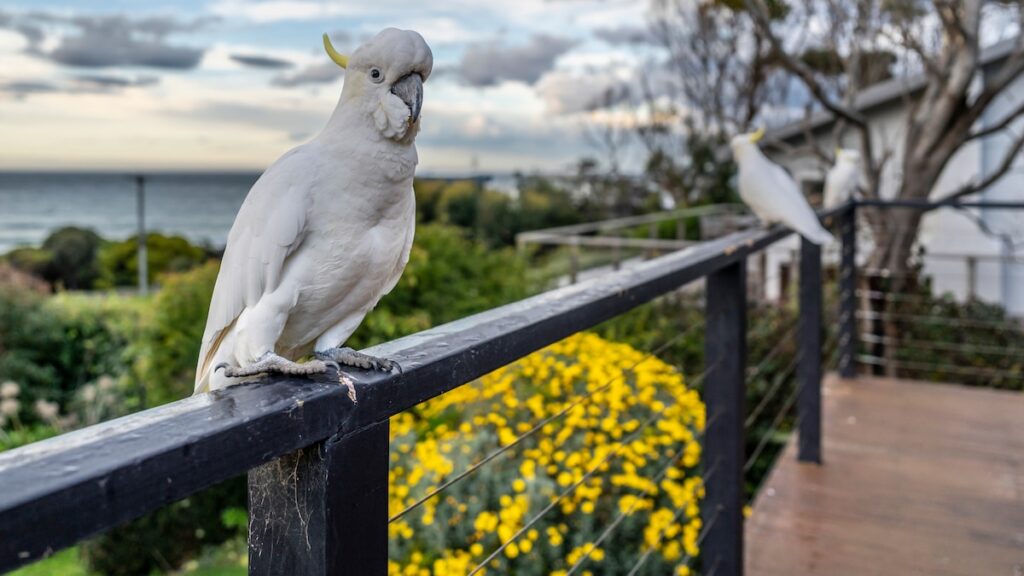Intelligent Sulphur-Crested Cockatoos Demonstrate Remarkable Problem-Solving Skills
In recent years, Australia’s iconic sulphur-crested cockatoos have showcased an extraordinary capacity for learning and adaptation, challenging long-held assumptions about avian intelligence. Once notorious for rummaging through trash bins in search of food-a behavior that quickly spread across numerous neighborhoods-they are now exhibiting a new, sophisticated skill: operating water fountains in urban parks. This behavior not only highlights their ingenuity but also underscores the complex social learning processes within bird communities.
Unraveling the Bird’s Cleverness
Barbara Klump, a renowned behavioral ecologist affiliated with the Max Planck Institute of Animal Behavior in Germany, has been studying these birds’ evolving behaviors. She expressed her amazement when observing a line of cockatoos patiently waiting their turn to interact with a water fountain, twisting the nozzle to access water. After over a month of meticulous observation, her team found that approximately 40% of the birds attempting to use the fountain succeeded, while nearly 70% of the tracked individuals made at least one attempt. This is a significant increase compared to earlier behaviors documented in 2021, where only about 32% of cockatoos tried to open trash bins.
Behavioral Transmission and Social Learning
The rapid spread of this water-fetching behavior across multiple neighborhoods-expanding from just three suburbs to 44 within southern Sydney-suggests a strong element of social transmission. Interestingly, the researchers did not observe a clear pattern of direct behavioral contagion during their study, implying that many birds might have already learned the skill independently or by observing others prior to the study’s commencement. The birds could have gained insights simply by watching their peers or even humans, demonstrating a remarkable capacity for observational learning.
Beyond Cockatoos: A Broader Perspective on Avian Innovation
While sulphur-crested cockatoos are among the most prominent examples, they are not alone in their ability to learn from one another. Other bird species have demonstrated similar problem-solving skills-such as ravens in California, which have been observed turning on water faucets, or pied crows in Ghana, which manipulate air conditioning units to access drinking water. These behaviors reveal a fascinating aspect of avian intelligence rooted in their highly developed brains.
The Neural Basis of Bird Intelligence
The key to these remarkable abilities lies in the avian brain structure. Louis Lefebvre, a distinguished ornithologist at McGill University, explains that sulphur-crested cockatoos possess a high density of neurons in their cortex-like brain regions-more per cubic millimeter than many primates. This neural richness correlates with their capacity for innovation and social learning, traits that are often associated with advanced cognitive functions across animal species.
The Benefits of Cognitive Flexibility
Although these cockatoos frequently interact with neighboring flocks, the current evidence suggests that the water-fetching behavior has not yet extensively spread beyond their initial groups. The researchers speculate that differences in fountain designs across various locations might influence the transmission of such behaviors. Nonetheless, reports from citizen scientists indicate that similar behaviors are emerging in other parts of Australia, including Brisbane, over 500 miles away, where birds are also beginning to manipulate water sources in their environments.
Implications for Urban Wildlife and Conservation
With Australia’s population projected to grow by approximately 12% over the next decade, urban expansion will continue to reshape the natural landscape. Adaptability and problem-solving skills like those demonstrated by these cockatoos are vital for species survival amid rapid environmental changes. Lefebvre emphasizes that such cognitive flexibility enhances resilience, potentially reducing the risk of extinction for adaptable species.
Looking Ahead: Human-Wildlife Interactions
As city officials and residents observe these intelligent birds mastering new challenges, questions arise about how communities will respond. Will they embrace these behaviors as part of urban biodiversity, or will they attempt to modify water sources to prevent the birds from accessing them? Historically, similar interactions-such as the “battle of the trash cans”-have shown that humans can adapt to and even facilitate wildlife ingenuity. The resilience and adaptability of sulphur-crested cockatoos suggest that they will continue to surprise us, possibly developing even more innovative ways to thrive in our cities.

